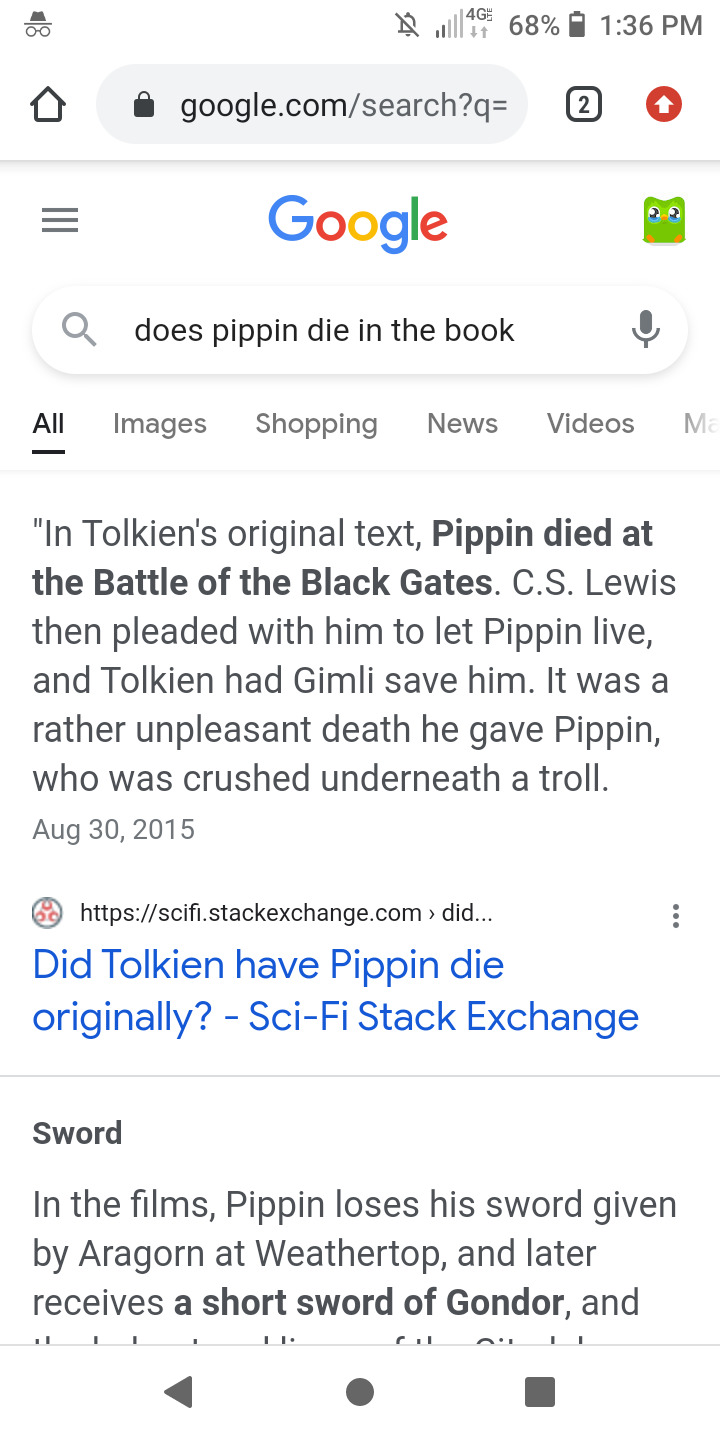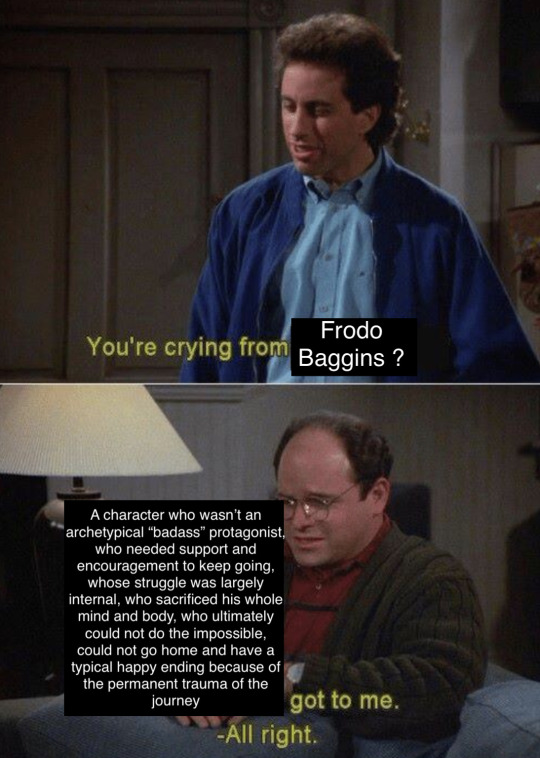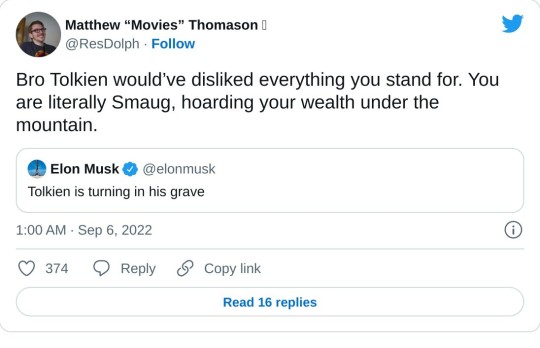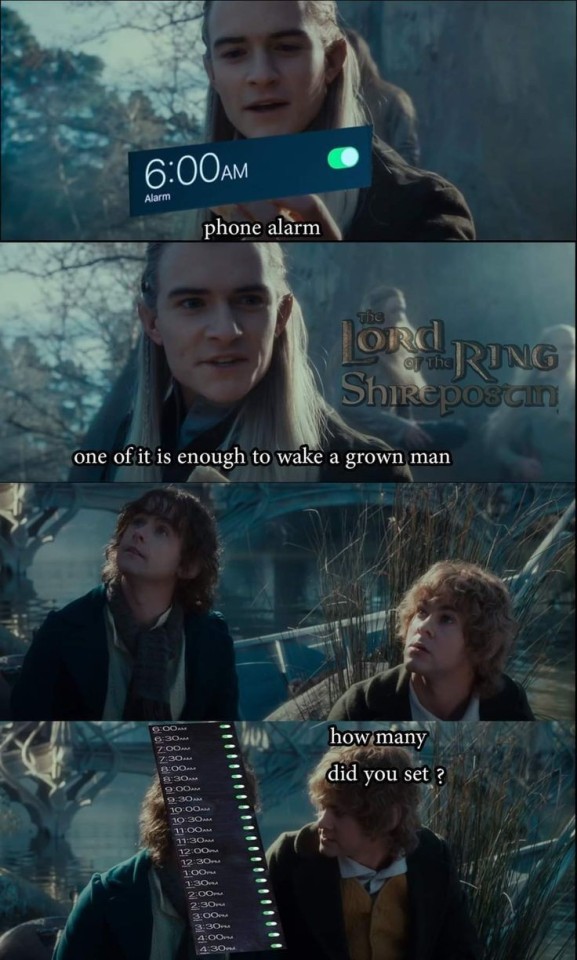Don't wanna be here? Send us removal request.
Text
Comparison between the Movies and Books
J.R.R. Tolkien was a fascinating yet somewhat boring fellow. He would spend a lot of time in his imaginative world and had simple values. Values that got passed down to his characters. He loved good beer, good stories, and a good smoke. From that alone, there are similarities that are passed down between Bilbo and Frodo. Those are kept in both his books and Peter Jackson's films.
John Ronald Reuel Tolkien had created entire races, worlds, and languages in his Middle Earth. Peter Jackson attempted his best to recreate that same magic in the movies. Not only the realisim but the magic as well. In an interview, Jackson mentioned how he wanted Saruman to be stabbed in the back and allowed Christopher Lee (Saruman) to the proceed to play the scene accordingly. Lee had actually fought in battle and knew exactly what kind of sound a person would make with that style of wound.
Jackson also seemed to demand a lot to recreate Gollum. There was another conversation that was recorded between Richard Taylor, Daniel Falconer, and Ben Wootten talking about how Peter Jackson really tried to push the technology available to the limits. Gollum was such a crucial character in the stories, two of the most famous J.R.R. Tolkien stories. Gollum was the terrible nightmare a hobbit could become if they were corrupt.
I don't think anyone had been brave enough to try to recreate that magic, at least not without some sort of example to follow through with it. As they said in the talk, not many characters were animated/CGI, they were only just creatures. The Lord of the Rings movies were revolutionary and made history in the world of cinematography. Just as the books did in literature.
Some areas were a bit of a shame because of their difference. Characters got erased along with the time span of the journey. I think the reason that Gandalf had taken so long to confirm that the ring that Bilbo found in his journey is because what are the odds he also found the Arkenstone. Yes, he was meant to technically find the Arkenstone but the ring was also extremely powerful and just found itself in the hands of a Baggins. It took him about 17 years in the books but it seemed like only moments in the film.
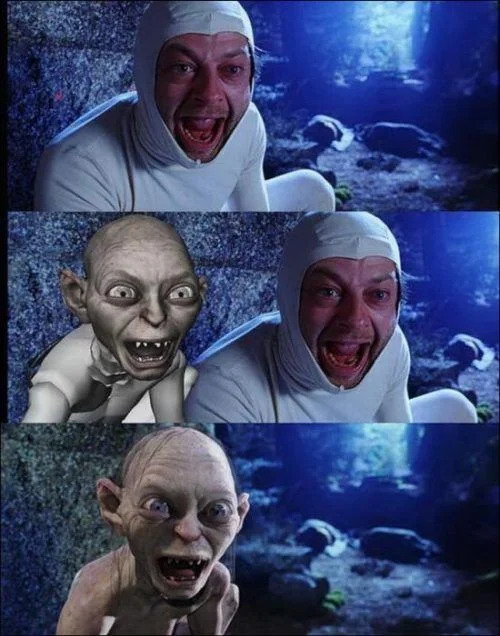
-M.C.
Sources:
"Christopher Lee calmly explains why he knows what sound to make when being stabbed in the back", https://youtu.be/Vx52kCxzllc
The Frodo Franchise (The Lord of the Rings and Modern Hollywood), p279. https://books.google.ca/books?hl=en&lr=&id=1odPDYvGBygC&oi=fnd&pg=PR11&dq=lord+of+the+rings&ots=6SZ52J0F_m&sig=6c4aS7puEH_UAQcADtUiBH-dUl4#v=onepage&q=book&f=false
2 notes
·
View notes
Text
Transition b/w the Hobbit, LotR, and the Silmarillion
While Tolkien might have been a simple man, he still lived a somewhat eventful life. He studied and worked at Oxford university, took a three day coding lesson, and was part of the Tea Club (of the) Barrivian Society.
He got a chance to travel and study and meet wonderful people who would become very important members of his life. Like C.S. Lewis and others.
When he was younger, he wrote on the back of a postcard, "Origin of Gandalf". The postcard had an old man with a long white beard sitting on a rock by a tree talking to the fauna nearby. He was also inspired by Old English Literature like the Green Knight and Beowulf. These fueled his imagination which created and encouraged his beautiful imagination. J.R.R. Tolkien was inspired by his surroundings and had a somewhat gentle soul at the start, which is how we ended up with stories like the Hobbit first. He, later on, wrote the Lord of the Rings trilogy. Those books were published within only one year and a few months between them. Then he was encouraged to write more, like an epilogue. Considering the Lord of the Rings books' increasing popularity, that was understandable.
C.S. Lewis tried to get him to continue his work on the Silmarillion after having written those books but in the end, it got published because of Tolkien's son, Christopher.
His wife was actually the inspiration for Arwen and Luthien. Who were some of the most beautiful women in the Middle Earth world.
I think having many of his friends killed in the war, it can be estimated that it affected his tone in writing. Deciding to write harsher battles.

-M.C.
Sources:
Perry C. Bramlett, I Am in Fact a Hobbit: An Introduction to the Life and Works of J.R.R. Tolkien, p6
Photo was taken from @JRRTolkien on twitter
0 notes
Text
The Art of Middle Earth
J.R.R. Tolkien was not just a writer but also an artist and within his books, he depicted and drew in his creations.
His work has affected thousand of proceeding works of fiction. He is the phenomenon that started new worlds, stories, and games. J.R.R. Tolkien became an inspiration to every fantasy writer/storyteller. Having new fans almost every decade.
Tolkien drew maps and creatures in his books along with inventing new dialects that would be written amongst the pages. But I doubt he ever thought about the generations of artwork that was to come from his stories.
Thousands of works have been created in inspiration. Drawings, stories, and even videos. Creating, along with the movie, a never-ending chain of art. You could even call the movies fan work considering how the director filmed and with the aid of the fan actors, managed to create these movies.
youtube
-M.C.
Sources:
Wayne G. Hammond & Christina Scull, The Art of THE HOBBIT, p100-101
0 notes
Text
youtube
Script and Sources Below
Orcs (And Uruk-hai) are such an integral part of Middle-Earth, and as a byproduct of the influence of Tolkein on the fantasy genre as a whole, part of colloquial understanding of fantasy.
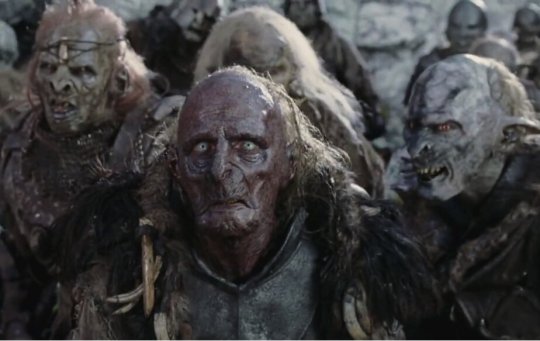


Almost every fantasy story has Orcs and goblins, or goes to great length to distance themselves from these creatures, embracing the concept and thus the concepts of high fantasy that are to be assumed with the orcs, or entirely avoiding orcs, letting the consumer know that this is different fantasy, and to expect the unexpected. But how can one look at (Or read) about something and know it’s an Orc? Well, Tolkein didn’t often describe the orcs in detail, as they more represent the evil, but he did sometimes tell the reader what they looked like, at least vaguely, saying “his broad flat face was swart, his eyes were like coals, and his tongue was red” (Fellowship Of The Ring, p. 325) The word swart in there means Swarthy, which is an old timey way of saying Dark-Skinned.
Contrast to one of our heroes, Aragorn, the big good king returning from exile to save Middle-Earth, while the series offers very few details on Aragorn's physical appearance, we know he is tall and lean with "a shaggy head of dark hair flecked with grey, and in a pale stern face a pair of keen grey eyes." or perhaps, another of the Fellowship, “Legolas was fair of face beyond the measure of Men " (The Last Debate, RotK) and it becomes a slight concerning that our band of heroes are all fair of face and pale, and our sometimes mindless/sometimes corrupted mortals enemies, the orcs, are described as dark-skinned. Adding in, that in the past of middle earth, “in the First Age, there were the Easterlings and Swarthy Men who were evil” (Human Image…, 2014) draws an uncomfortable picture of the ideology and uncomfortable ideals around race, and problematic ethnographic details. And while Tolkein famously didn’t believe his writings were representative, “his role as a mythmaker is not complete in merely conjuring a world that he thinks should be real; it is also about universal truths and fundamental Christian values.” (Human Image…, 2014) And the issues mount throughout the main Lord of the Rings stories, where the ‘goblin-soldiers’ of Isengard are described as being ‘of greater stature, swart, slant-eyed, with thick legs and large hands’ and elsewhere as ‘large, swart, slant-eyed’ (Two Towers, pp. 415, 451). Additionally, a glimpse of the appearance of the Orcs is also given through the description of Saruman’s half-goblin or half-Orcish Men, the result of his having ‘blended the races of Orcs and Men’ (Two Towers, p. 473). Already in Bree we met a ‘squint-eyed southerner’, the companion of Bill Ferny, who is also described elsewhere as ‘swarthy’ and with ‘a sallow face with sly, slanting eyes’ (Fellowship Of The Ring, pp. 160, 165, 180) Which depicts a commonality of descriptors seen not only for the Orc, but the Uruk-Hai, the Goblins, and the mixed versions of the “evil races.”
In arguing one of the treatments for a possible adaptation of his work, Tolkien fought against an interpretation of the Orcs, where in the adaptation they had beaks and feathers and thus made more monstrous, Tokien responded in one of his letters that “The Orcs are definitely stated to be corruptions of the ‘human’ form seen in Elves and Men. They are (or were) squat, broad, flat-nosed, sallow-skinned, with wide mouths and slant eyes: in fact degraded and repulsive versions of the (to Europeans) least lovely Mongol-types.” (The Letters of J.R.R.Tolkien, From a letter to Forrest J. Ackerman [Not dated; June 1958]) Which is not good. In fact, it’s so not good that it matches the description used to very racistly describe what is now an outdated and known racist term of Mongoloid, “Flat face with a low nasal root, accentuated zygomatic arches, flat-lying eyelids (which are often slanting), thick, tight, dark hair, dark eyes, yellow-brownish skin, usually short, stocky build” (Taken from Wikipedia) So it’s easy to see this and realise why so many within the scholarly community around fantasy literature and fiction are in recent years decrying the depiction of the Orc.
But one can argue that regardless of what Tolkein thought, whether he was racist and thought that Dark Skinned and Asian people were monstrous or not, he’s dead and we don’t have to engage with or support his writing anymore, and we’ve moved past racist depictions of Orcs. But in the fact that Tolkein essentially made the modern orc, and it really hasn’t changed from his depiction of it, there are still tonnes of baggage attached to the orcs and the idea of the monstrosity of it. The origin of the Orcs as being inspired by or extrapolated from a racist description of real life people continues its ramification in fantasy media. Despite the fact that Orcs in popular culture now often have what is called a Cockney accent, while English is also famously working class, and traditionally seen as a sign of lower intelligence by classist people. Additionally, Dungeon and Dragons Fifth Edition, the world's most famous roleplaying game, which has players build a character from fantasy species with lore nearly directly ripped from lord of the rings (Halflings or hobbits are sneaky and clever but want to enjoy a good life, elves are long lived, wise, and beautiful, dwarves live underground and have a great deal of greed, etc) gives players statistical bonuses to various attributes based on their character’s species. Dwarves are hardier and have more stamina, elves are more wise and graceful, etcetera. Then, in November, 2016, a new book allowed players to officially play as Orcs. They had a bonus to strength, but infamously, had a negative to intelligence. The smartest Orc player character, as set out by these rules, could never be as intelligent as the smartest elf or human. Thus, the continued implications of Orcs being less-than, as started with Tolkein, continues well into the contemporary fantasy media landscape. Unless authors actively work to undo this era of allowed racism, the problem will not go away, and while Tolkein offered a lot to Fantasy, it’s intolerable to allow these types of things to be perpetuated because of its status as a staple of the Genre.
-D.D
Sources:
Tneh, David. “The Human Image and the Interrelationship of the Orcs, Elves and Men.” Https://Journals.tolkiensociety.org/Mallorn/Article/View/51, 1 Dec. 2014, https://www.jstor.org/stable/48614822.
J. R. R. (John Ronald Reuel), 1892-1973. The Letters of J.R.R. Tolkien : a Selection. Boston :Houghton Mifflin Co., 2000.
Tolkien, J. R. R. The Lord of the Rings. HarperCollins, 1991.
Volo's Guide to Monsters Wizards of the Coast, 2016.
3 notes
·
View notes
Text
Tolkien – Nature and the Machine
Tolkien was said to have had an intense love for nature, contrasted by his aversion of the machine. He considered the man-made machines to represent man’s coercion over nature. For Tolkien, machinery – and the rapid urbanization it afforded – was an evil.
These feelings were represented in The Hobbit and Lord of The Rings by Tolkien’s depiction of the good and evil characters and locations. The Shire is a depicted as a peaceful land. It is comparable to the West/Central Midlands of Tolkien’s youth. It is idyllic, rural and rustic. The inhabitants of the Shire, the hobbits, represented the rustic English people. And like Tolkien, the hobbits had a distaste for complex machinery. Tolkien’s descriptions of the Shire evoke a nostalgic idea of home. Tolkien likely considered this to be the natural, preferable way of life, and therefore, good.

On the other hand, Tolkien likened magic in Middle-Earth to machinery of our world. The magical One Ring is among the worst kind of machine – a device to control and coerce the world. It is created for the villainous Sauron to do just that. The Ring represents man’s fulfillment of desire through power. It is the kind of power that forcibly transforms the natural world. Understandably, Tolkien presented this as evil.

In contrast, Tolkien considered the elves and their fulfilment of desire through art to be the better path of progression. It is progress that does not come at the expense of nature. A notable event in Lord of The Rings is the attack of Isengard by the Ents, which can be seen as a confrontation of the two opposing sides. The Ents are slow-moving, slow-talking, usually peaceful tree-like creatures. Whereas Isengard is the abode of Saruman, the evil wizard and secondary villain of the stories. It is a tall and oppressive seat of power. The Ents can be seen as representative of nature, while Isengard represents the man-made, the machine, urbanization. The victory of the Ents over Saruman and Isengard can be seen as a wish fulfillment for Tolkien, where nature reclaims the city.
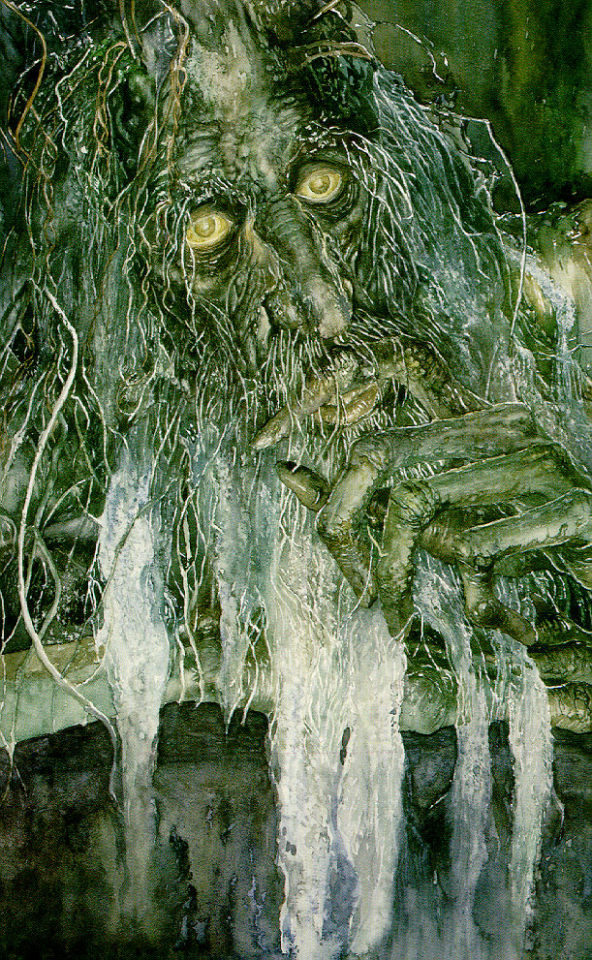

youtube
Ultimately though, Tolkien was disappointed with how urbanization seemed unstoppable, expanding into the rural areas of England. This is likely reflected towards the end of Lord of The Rings, where the Shire is overrun by evil men and the sanctity of the idyllic home is ravaged, becoming a heartbreaking hellscape.

-I.A
Sources: Source 1 - https://archive.org/details/tolkienarchive/Documentaries/1996+-+J.R.R.+Tolkien+-+A+Film+Portrait/J.R.R.Tolkien+-+A+Film+Portrait.mp4 Alternate Source 1 - https://www.youtube.com/watch?v=rNqVqzIxi3A
Source 2 - https://archive.org/details/tolkienarchive/Documentaries/1998+-+J.R.R.+Tolkien+-+BBC/J.R.R.+Tolkien+-+BBC+(1998).mp4
Source 3 - https://archive.org/details/tolkienarchive/Interviews/1964+-+J.R.R.+Tolkien+Interview/J.R.R.+Tolkien+1964+interview+(Subtitles).mp4 Alternate Source 3 - https://www.youtube.com/watch?v=bzDtmMXJ1B4
1 note
·
View note
Text
Mythology and Culture of Middle-Earth
Tolkien’s worldbuilding of Middle-Earth is arguably unparalleled. He created a mythology – a seemingly realistic mythology – for a completely fictional world. However, this wasn’t something he planned. The mythology of Middle-Earth began forming even before Tolkien conceived the ideas for The Hobbit or Lord of The Rings. Tolkien’s field was in philology (which I understand to mean a study of languages in oral and written historical sources) and his area of expertise was in Anglo-Saxon studies. It is said that he lamented the absence of stories, legends, myths of Anglo-Saxon culture – the loss of which has been attributed to conquest of England by the French-speaking Normans. Tolkien decided to create a fictional English mythology (albeit one that he considered to be authentic) as means to replace the one that was lost. Tolkien looked into myths, fairy stories, heroic legends from cultures like Greek, Celtic, Romance, Germanic, Scandinavian and Finnish to create this mythology. He did this over decades and revised them over and over, which had the effect of resembling real-life cultures and mythologies, which often have multiple versions from various sources.

Tolkien’s stories and imaginary histories, which started out as The Book of Lost Tales, formed the basis of what would eventually become The Silmarillion. Although, prior to 1937, this was not Middle-Earth, but rather a Secondary World that Tolkien created to escape from the real world (which were going through some troubling events – urbanization, world wars etc.).

While this was ongoing, Tolkien wrote The Hobbit and had it published in 1937, completely unconnected to the mythology of his Secondary World. After the success of The Hobbit, Tolkien was asked to write a sequel. When Tolkien decided to write Lord of The Rings, he began utilizing the (still incomplete) mythologies that he had built up for decades and integrated them into the world of The Hobbit. By connecting The Hobbit to his fictionalized Anglo-Saxon mythologies, the collection of stories that made up Tolkien’s Secondary World started to become the history and mythology of Middle-Earth. After the success of Lord of The Rings, Tolkien spent the rest of his life working on completing The Silmarillion, which he was unable to do when he passed away in 1973. The Silmarillion was completed by his son, Christopher Tolkien in 1977.
-I.A
Sources: Source 1 - https://archive.org/details/tolkienarchive/Documentaries/1996+-+J.R.R.+Tolkien+-+A+Film+Portrait/J.R.R.Tolkien+-+A+Film+Portrait.mp4 Alternate Source 1 - https://www.youtube.com/watch?v=rNqVqzIxi3A
Source 2 - https://archive.org/details/tolkienarchive/Documentaries/1998+-+J.R.R.+Tolkien+-+BBC/J.R.R.+Tolkien+-+BBC+(1998).mp4
Source 3 - https://archive.org/details/tolkienarchive/Interviews/1964+-+J.R.R.+Tolkien+Interview/J.R.R.+Tolkien+1964+interview+(Subtitles).mp4 Alternate Source 3 - https://www.youtube.com/watch?v=bzDtmMXJ1B4
0 notes
Text
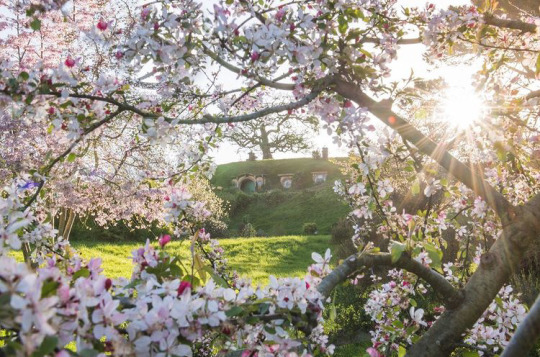
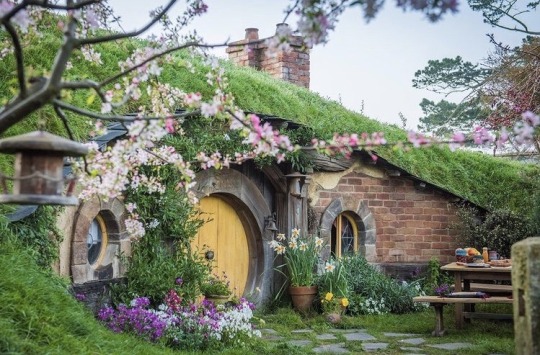
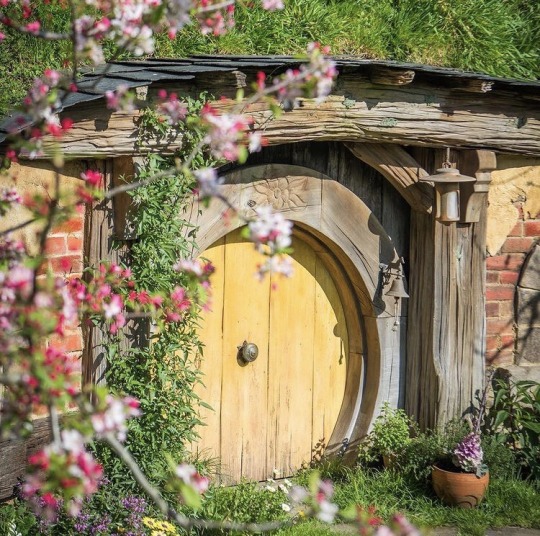
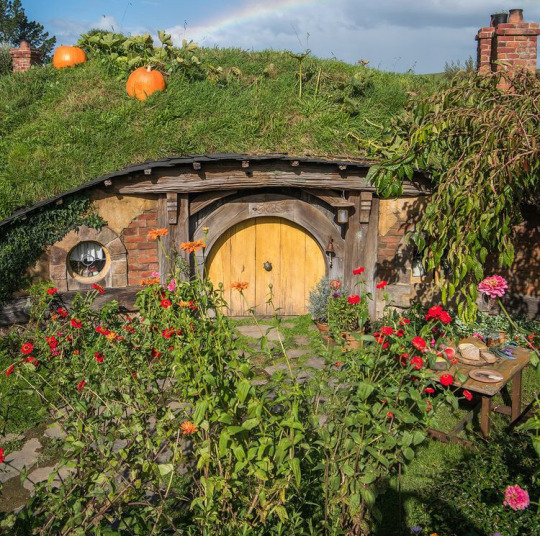
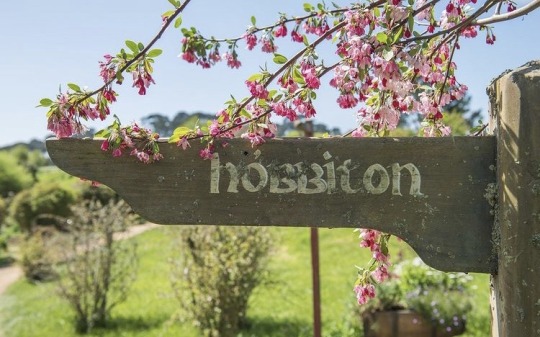
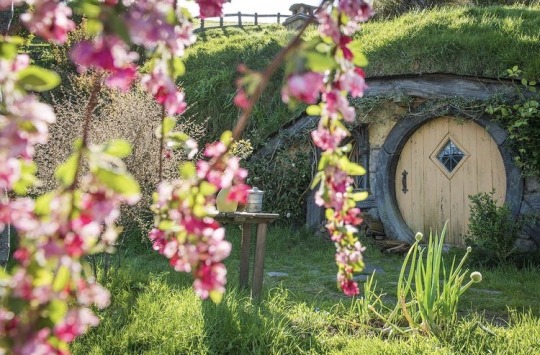
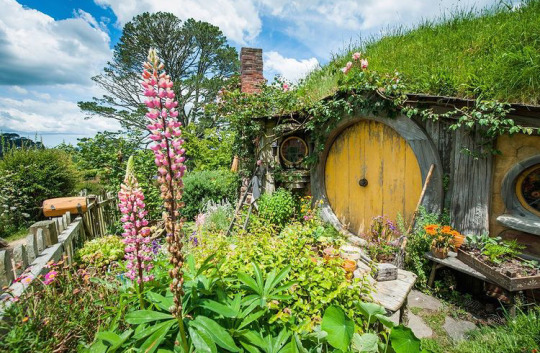
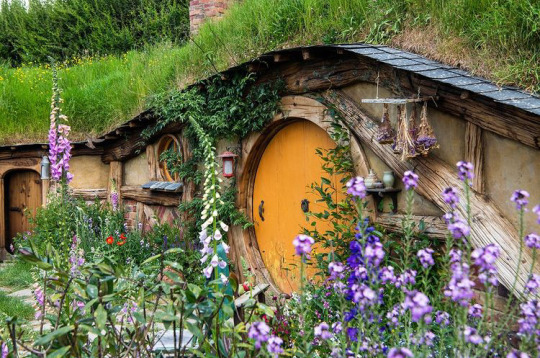
In a hole in the ground there lived a hobbit 🍃
~ hobbitontours on ig
8K notes
·
View notes
Text
"War must be, while we defend our lives against a destroyer who would devour all; but I do not love the bright sword for its sharpness, nor the arrow for its swiftness, nor the warrior for his glory. I love only that which they defend."
J.R.R. Tolkien
96 notes
·
View notes

